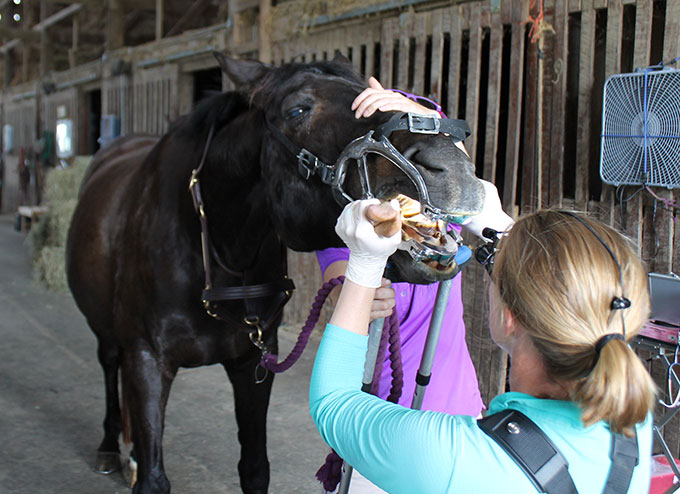
Rehabilitating the Equine Stifle
Horses with injured stifles have the best chance of returning to full work following a scientifically planned rehabilitation process.

Horses with injured stifles have the best chance of returning to full work following a scientifically planned rehabilitation process.

A veterinarian describes how he formulates a rehabilitation plan for a horse recovering from an injury.

Practitioners use electrotherapy methods ranging from vibration and lasers to shock wave in equine injury rehabilitation.

Controlled exercise, as discussed with your veterinarian, can be part of a successful rehabilitation program.

Equine hydrotherapy generally allows for patient-specific approaches to rehabilitation and training.

For an older horse, veterinarians recommend general anesthesia with oxygen and monitoring of vital signs when undergoing surgery.

Bonny Henderson, DVM, CERP, describes how extracorporeal shock wave therapy (ESWT) works to treat and even prevent injuries.

Read about some of the trending and emerging treatments for keeping performance horses feeling their best.

Placing elastic therapeutic tape strategically on the skin might stimulate the underlying muscles and help horses recovering from back pain or injury.

Preparation before orthopedic surgery is key to helping horses recover and maximizing their chances of return to performance.

Training horses in the spring and summer can present some challenges. Learn how your horse’s body adapts to exercise training, how he acclimates to spring and summer weather conditions, and what you can do to help him perform at his best.

A physical therapist and veterinarian discuss potential applications of blood-flow-restriction training, compression therapy, and more in horses.

To understand how horses fared during standing flank laparotomy for colic, researchers reviewed records from 37 equids. Here’s what they found.

To support workforce development, a University of Connecticut team seeks to understand which practical skills and knowledge are most useful for nonveterinarians in the equine rehabilitation industry.

Read about three real-life examples of equine athletes that made full recoveries from their injuries, including their diagnostic challenges, rehab modalities, and recovery details.

Modern options for equine sedation allow veterinarians to safely and thoroughly provide care for their patients during standing procedures such as dental exams and joint injections.
Stay on top of the most recent Horse Health news with
"*" indicates required fields